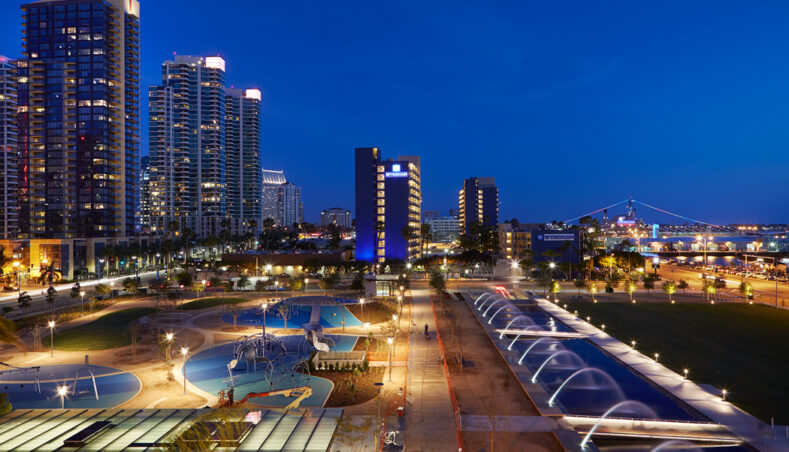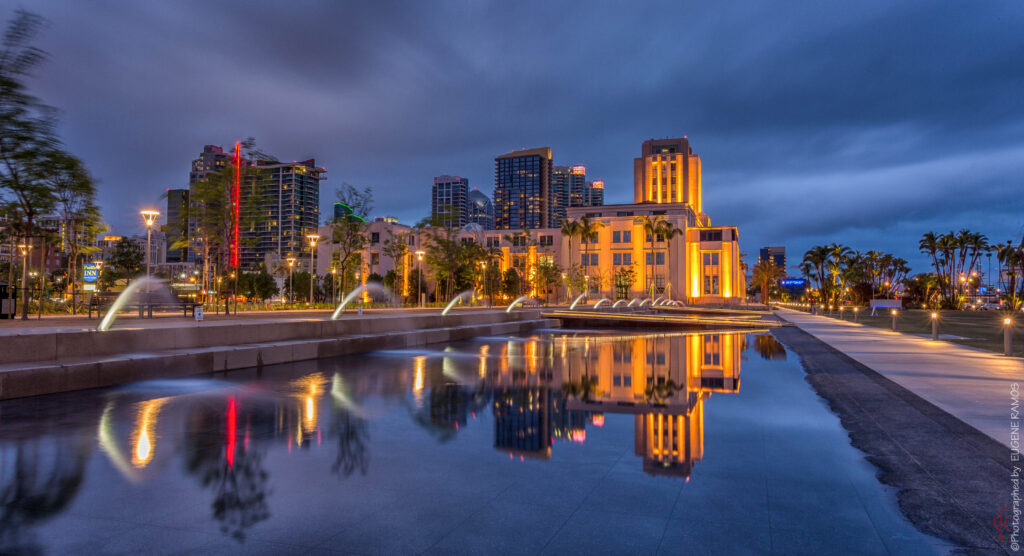Sustainability Update: Water Features Help Conserve Water
Posted in Insights -

It may seem counterintuitive that a structure that relies on water to operate can actually help stakeholders reduce water usage—but it’s true. In fact, many of the stakeholders our company works with are surprised to learn that water features can help them conserve water and meet their sustainability goals at their buildings.
Firstly, water conservation in a fountain be achieved with proper design to decrease evaporation and splash—the primary means through which commercial fountains can lose water. We have utilized these methods in many of the projects our team has designed and constructed, including the water features we built for a wellness garden at Cedars-Sinai Hospital in Los Angeles, California. Because it was critical at this world-renowned medical center that no water from the fountains was sprayed into the atmosphere, we incorporated a small bubbler nozzle into each round basin of the water features to create a gentle ripple effect without water spray. We have used similar elements in other fountains to minimize splash and keep water within the structures.
Another way water features can enhance water conservation efforts is to use recirculated water to run the fountains. One of the projects our firm has delivered that demonstrates this method is at San Diego’s Waterfront Park. This 830-foot-long fountain and children’s splash area utilizes water that is safely stored in an underground reservoir, where it is constantly filtered and recirculated to create a safe and sustainable asset for the city of San Diego.
Other ecologically friendly water sources for fountains include recycled water, reclaimed stormwater, and HVAC condensate. Each of these alternative sources underscores our industry’s extensive efforts to preserve this precious resource while creating projects that enhance the appeal and value of their environment and provide opportunities for increased income for stakeholders.
Despite beliefs to the contrary, water features that are expertly designed, engineered, constructed, and maintained do not waste water or function on a high amount of water. In addition, fountains can encourage the people who experience them and are moved by their beauty to conserve water in their daily lives—a practice which has a positive ripple effect on the environment.
